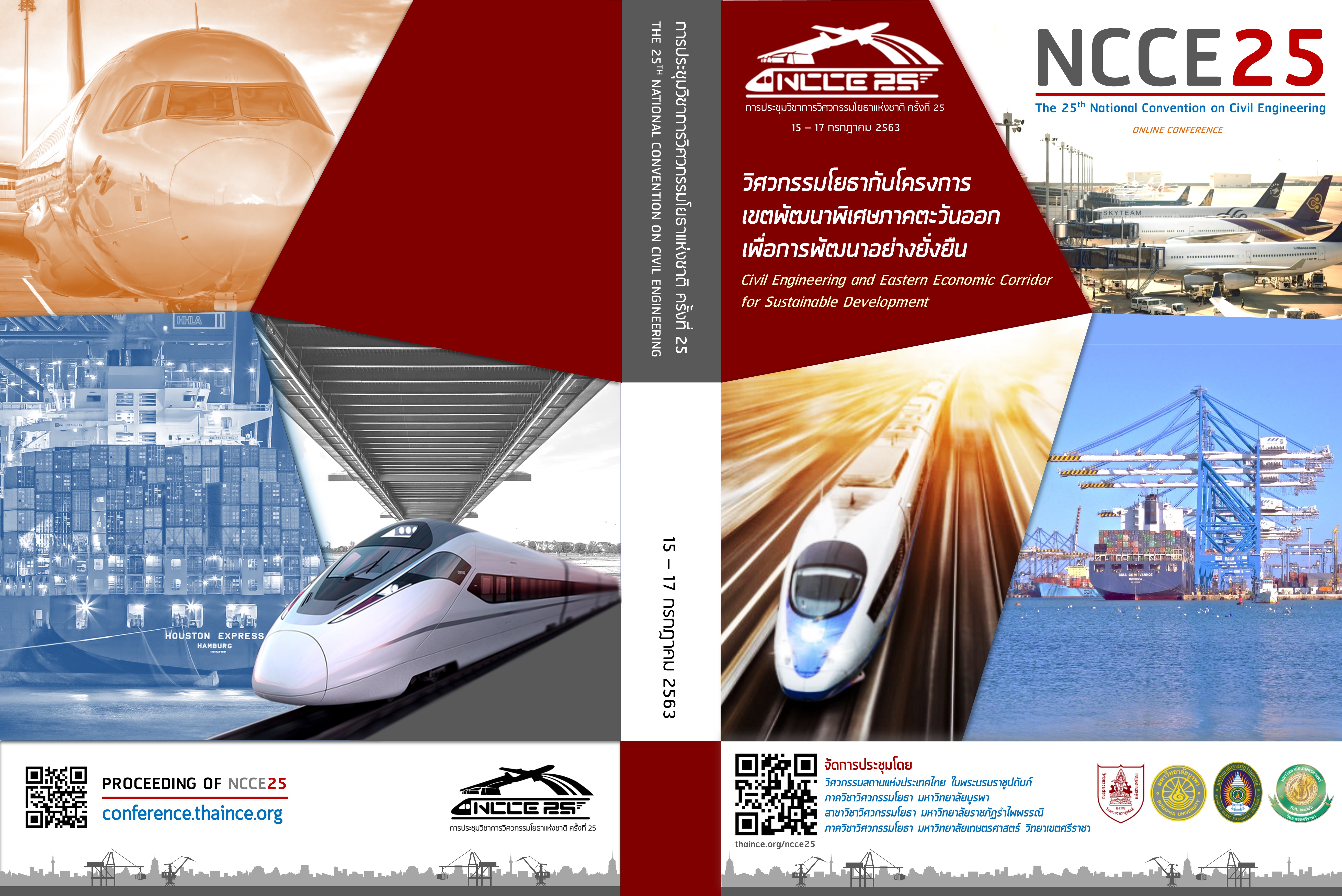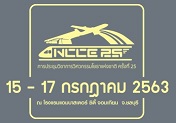Development of Cellular Lightweight Concrete on Sugar Industrial Waste
Keywords:
lightweight concrete, density, compressive strength, bagasse ash, lime mudAbstract
The objectives of this research were to study and develop cellular lightweight concrete as well as to determine the compressive strength and density by replacing cement with bagasse ash and lime mud in order to use lightweight concrete developed from bagasse ash and lime mud in construction works. The research was conducted by using the equivalence with TIS. B.E. 2601-2556, Quality Class C9, which has compressive strength greater than 25.5 kg/cm³ and density of 801-900 kg/m³. The calculation of the mixture of bagasse ash and lime mud was based on the prototype formula at the mixture ratio of cement/sand at 1.00: 1.00 and water/cement (W/C) at 0.50: 1.00 with the most approximate density and compressive strength to TIS. B.E. 2601-2556, Quality Class C9 in the incubation periods of 7, 14 and 28 days, by replacing with bagasse ash and lime mud at 5-35% in the mixture ratio of cement. From the experiment results, it was found that the replacement with bagasse ash would have the highest density when replaced by 20% and the highest compressive strength when replaced by 15%. And the replacement with lime mud would have the highest density when replaced by 30% and the highest compressive strength when replaced by 5%. When the values obtained were compared with TIS. B.E. 2601-2556, Quality Class C9, it was found that bagasse ash could not replace cement. Also, the lightweight concrete that was replaced with bagasse ash and lime mud could still not be equivalent to other products available in the market. However, lime mud could replace cement and be used for real construction works, which could be considered as the application of industrial leftovers to maximize benefits.
Downloads
References
สุชา กิตติวรารัตน์ และ ภูษิต เลิศวัฒนารักษ์ (2555). การจัดการเพื่อลดเศษวัสดุในงานสถาปัตยกรรม. (สถาปัตยกรรมศาสตร์มหาบัณฑิต). มหาวิทยาลัยธรรมศาสตร์, คณะสถาปัตยกรรมและการผังเมือง.
กลุ่มส่งเสริมอุตสาหกรรมชีวภาพ สำนักงานคณะกรรมการอ้อยและน้ำตาลทราย (2561). การผลิตไฟฟ้าและไอน้ำของอุตสาหกรรมอ้อยและน้ำตาล, สิงหาคม 2561, หน้า 1
ดิศราภรณ์ ศรีนาค (2557). คอนกรีตผสมเถ้าชานอ้อย, https://sites.google.com/a/email.nu.ac.th/bamboo-architecture/concrete
nucifer. ม.ป.ป. (2557). อิฐมวลเบา: ข้อดีข้อเสียของวิธีการผลิตอิฐมวลเบา แบบ AAC และ CLC. (Online). http://www.nucifer.com /2014/ 12/05/อิฐมวลเบา_aac clcจึงเป็นทางเลือกที่ดีในการนำมาพัฒนาให้ดีขึ้น, 15 เมษายน 2563.
ดศิสกุล อึ้งตระกูล (2557). การพัฒนาคอนกรีตมวลเบาระบบเซลลูล่าร์จากกากปูนขาวในอุตสาหกรรมผลิตกระดาษ. วิทยานิพนธ์ปริญญาโท, มหาวิทยาลัยศิลปากร.
ดร.วีระศักดิ์ ละอองจันทร์, อมเรศ บกสุวรรณ, ดร.หมิง จิ๋ง และ นิติ วิทยาวิโรจน์ (2553). การพัฒนาบล็อกแก้วคอนกรีตมวลเบาโดยการผสมฝุ่นจากเตาเผาปูนขาว-ผลพลอยได้จากอุตสาหกรรมผลิตกระดาษ. ภาควิชาวิศวกรรมโยธา คณะวิศวกรรมศาสตร์ มหาวิทยาลัยเทคโนโลยีราชมงคลธัญบุรี, ปทุมธานี.
วสวัตติ์ เอกพานิช (2555). ปัญหากฎหมายการจัดการฝุ่นละอองจากการก่อสร้างอาคาร. วิทยานิพนธ์มหาบัณฑิต.มหาวิทยาลัยธรรมศาสตร์, คณะนิติศาสตร์ สาขากฎหมายทรัพยากรธรรมชาติและสิ่งแวดล้อม.
สำนักงานมาตรฐานผลิตภัณฑ์อุตสาหกรรม (2556). มาตรฐานผลิตภัณฑ์อุตสาหกรรมคอนกรีตบล็อกมวลเบาแบบเติมฟองอากาศ. มอก. 2601-2556
Downloads
Published
How to Cite
Issue
Section
License
บทความทั้งหมดที่ได้รับการคัดเลือกให้นำเสนอผลงานในการประชุมวิชาการวิศวกรรมโยธาแห่งชาติ ครั้งที่ 25 นี้ เป็นลิขสิทธิ์ของ วิศวกรรมสถานแห่งประเทศไทย ในพระบรมราชูปถัมภ์



